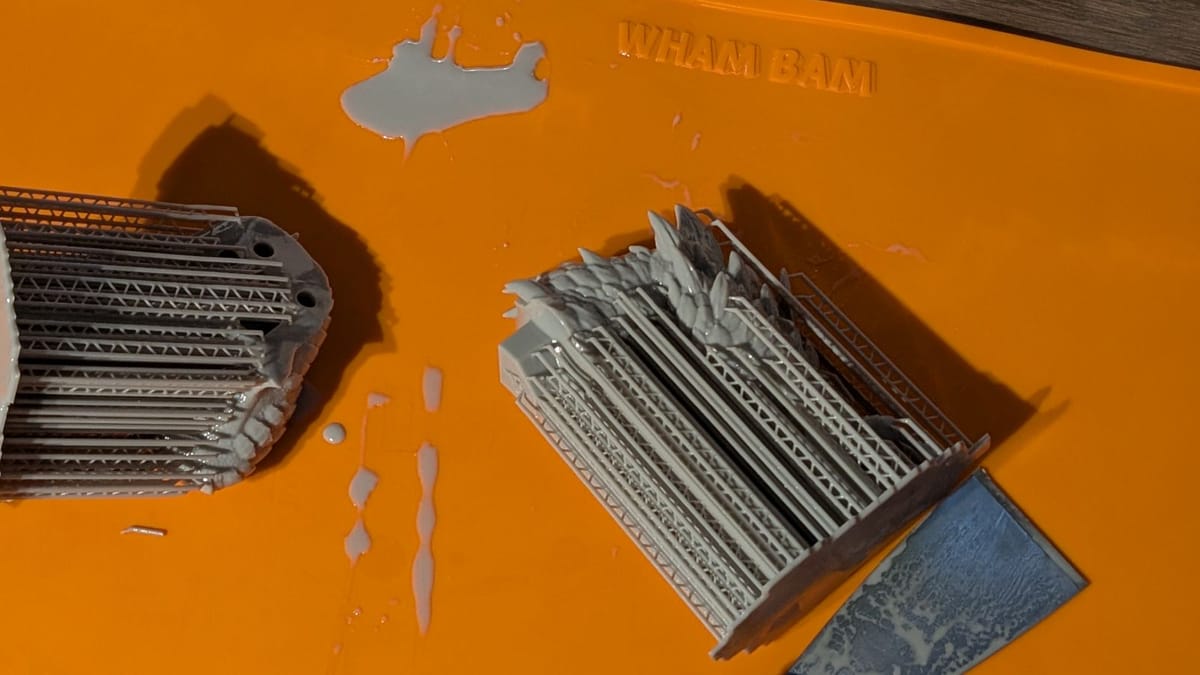
I’ve been 3D printing for a while now, and I have a bit of a system figured out. When I get a printer, I pick up a handful of things automatically to keep my workspace safe and organized. A semi-rigid tray underneath in case of resin spills, an ultra-thin mat that sits under everything that makes it easy to spray and wipe clean, a screen protector, and more ensure a clean and safe working environment. Pulling a plate, I set it on its side, then use a hard scraper to pop the print loose and onto my thin work surface for processing. When I have a failure, I run the clean process, pop the edge of the vat, and then press gently from underneath on the edge to run a rubber spatula under it to free it from the FEP. I guess what I’m saying is that I have a workflow well defined, and it works well.
Well, I thought it did.
More than a few people have said that consumers don’t know what they want until it's shown to them. It turns out, that’s entirely true. I didn’t think I was in that group, but in this case I was. My well-defined workflow works, sure, but it could be a whole lot better. I’ve used a Wham Bam magnetic plate on my Elegoo Saturn 3, and I’ve replaced my print surface on my Neptune when it took a nasty scratch from a print malfunction. Remembering how easy it was to pop prints free, and also remembering how badly I cut myself once when I slipped with a scraper, I went whole hog – a plate for my behemoth Elegoo Jupiter LE, a trio of plates for my Saturn 4, Saturn 4 Ultra, and new Saturn 4 Ultra 16K, and even a tiny lil plate for the Mars 5. As I did, I spotted a few tools that I’d not seen before and took a flyer at them as well.
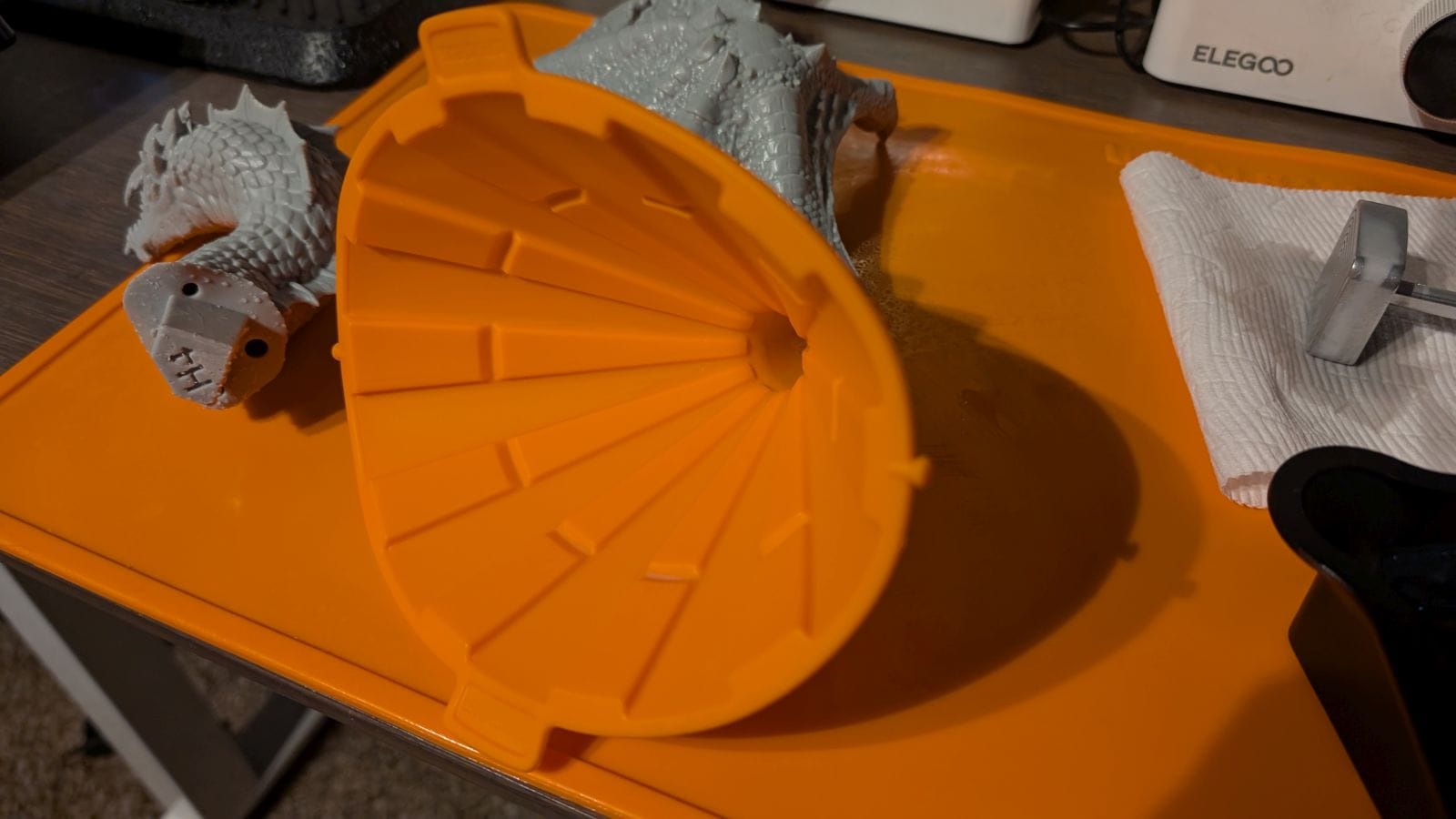
If you've resin 3D printed, then you know that you end up using a lot of paper towels and spray IPA to clean. The thin neoprene mat I was using is about 2mm thick and sticks to the wood surface of my desk, for the most part. Occasionally it'd wrinkle a bit, but it seems to work the vast majority of the time. At least, until it doesn't. During a recent print I had a failure that caused several inches of very sharp supports to jam through the FEP. I didn't realize until hours later when it had fully failed. When I lifted the tray it poured resin over the screen (plenty had already partially cooked to it already) and all over this flat mat. It then raced to the edge, and headed towards the floor. I got a glove underneath it before it ended up dripping to the ground, but it quickly highlighted why a lip at the edge is important.

Wham Bam makes three sizes of Slap Mat varieties – the Mini Slap Mat at 3.6 inches round for bottles to sit on, the Original Slap Mat at 9.5 x 19.7 inches, and finally the Mega Slap Mat at 13.6 x 25.5 inches. I picked up the latter as it’d cover the entire space in front of two of my printers and my wash/cure station. At $28 for the Mega, it’s certainly more expensive than the cheap mats I’d been using, by double. As I screamed at my wife to hurry with a bucket to catch the rapidly escaping resin, I realized that I hadn’t saved a dime.
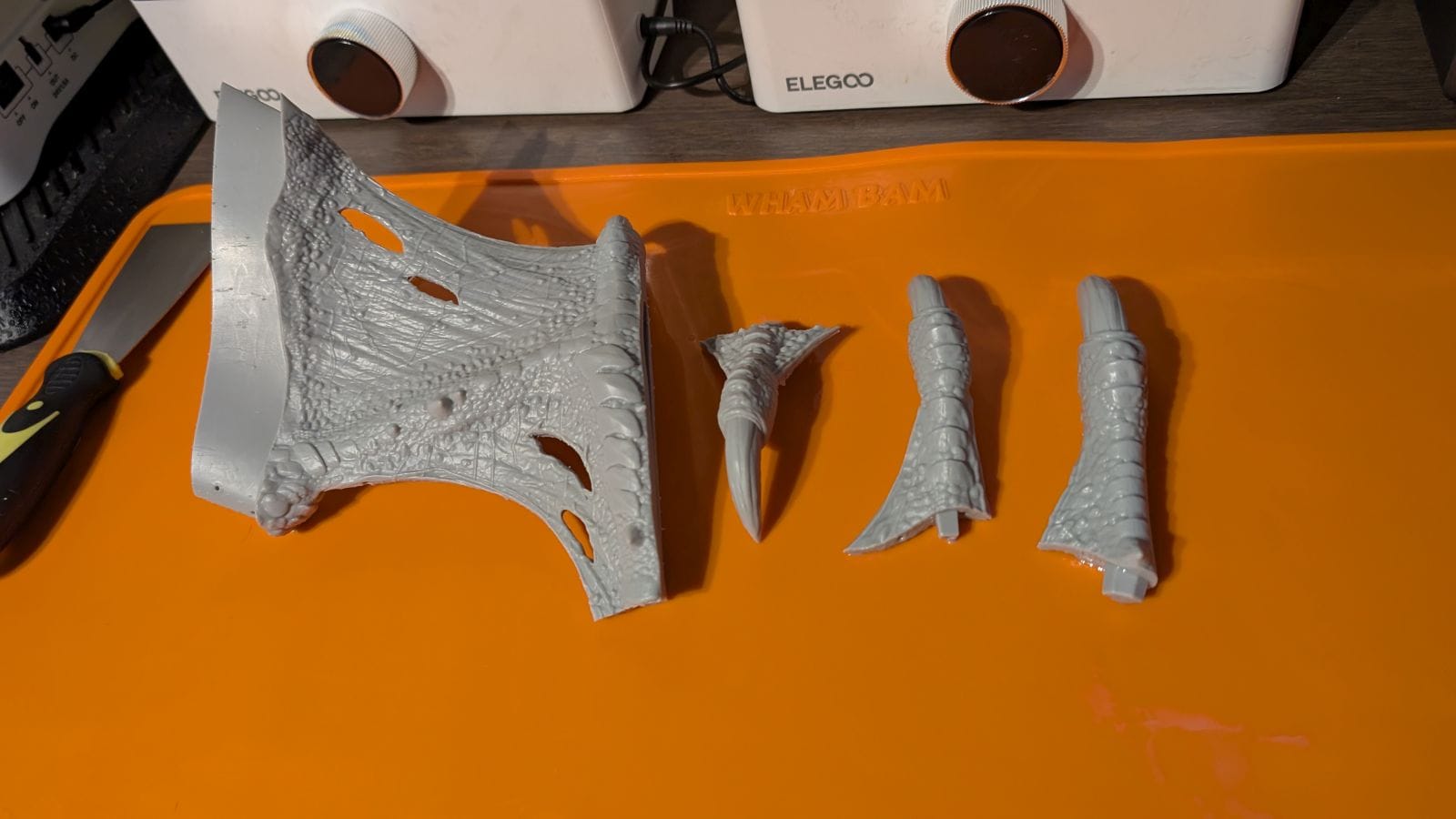
All three of the Slap Mat varieties are made of pure 100% first-grade silicone. What does that mean? Well, you could jam the hot end of a fully-heated soldering iron into it for a full three minutes and not melt it – it’ll hold up to anything you throw at it. The edge has a small barrier roughly 5mm wide all the way around, and between 3-4mm tall. It won’t stop a flood, but it will contain a spill. If you are using a magnetic plate, you don’t have to worry about scraping things off your build plate, but if you aren’t, you can safely do this over the Slap Mat. I know this as I slipped off the plate, jamming the sharp corner of the scraper directly into it. I can’t show you where because it didn’t make a mark. What surprised me was a use I’d not thought of when I first bought it.
Sure, you can use IPA and a paper towel to wipe the surface clean, but then you’ve got a paper towel to cure to make it safe. Leaving it in a disposable aluminum foil turkey roasting pan has been my go-to for a while now, but what if we had a different way? Taking the entire mat outside and leaving it in the sun for about an hour turned a pie plate sized resin spill into a solid frisbee, ready for disposal. Just like a magnetic plate, I was able to easily pop it loose so I could get back to building. I don’t personally use it this way, but I would imagine that the mat could be useful for painting, assembly, and as a general work surface. Unlike my cheap and thin mat, the Slap Mat holds up to the abuse of having a printer on it non-stop, or the wear and tear of assembly.
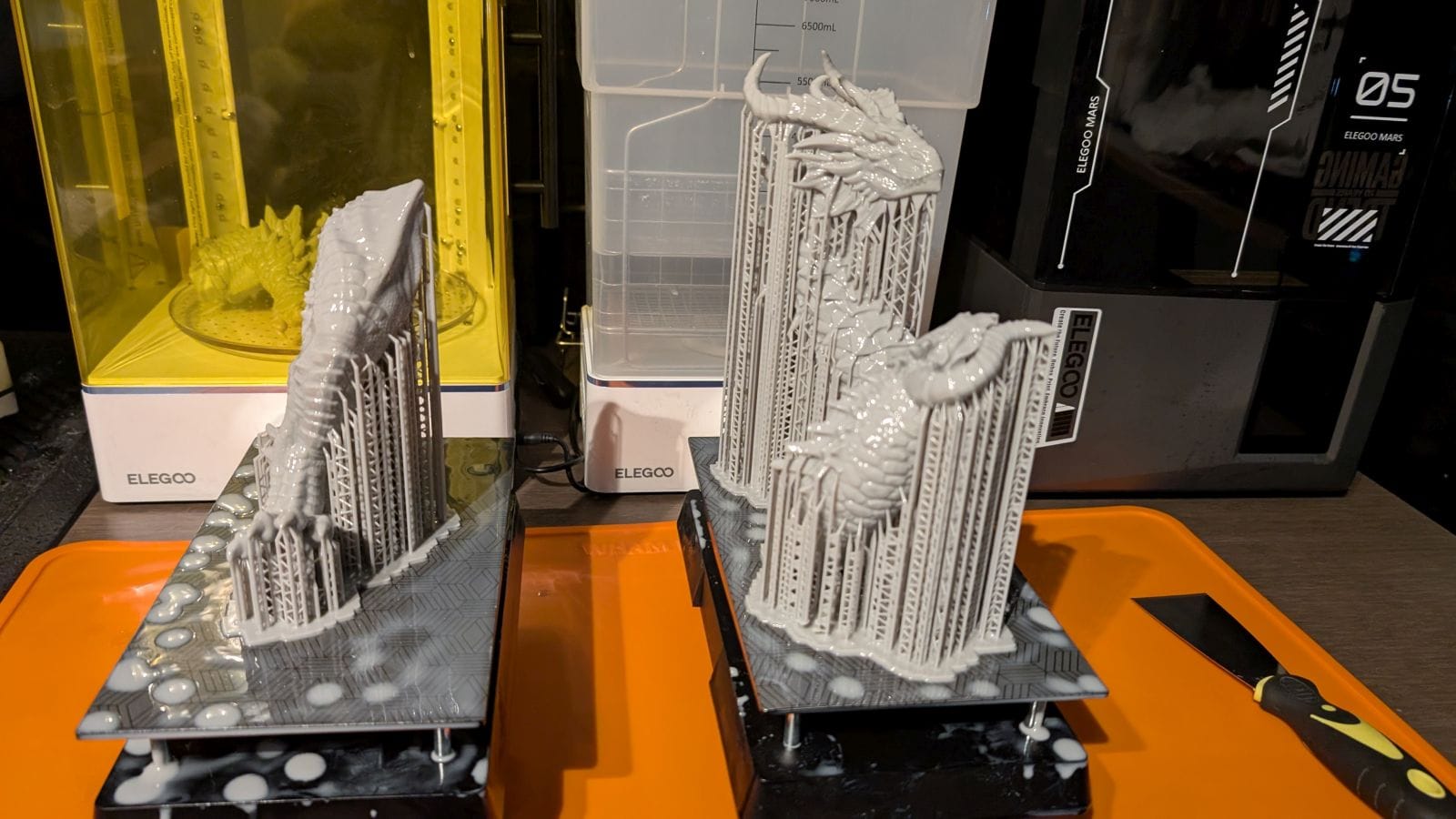
Beyond the Slap Mat, I picked up a few other accessories to hopefully keep my mess to a minimum. I knew that sticking my finger onto the bottom of the FEP, even with a glove, isn’t the best way to get the cleaned resin rectangle out of the vat. I took a flyer on the Ultim8 VAT tool – a small aluminum square with a handle on it. Putting this into the vat, you run the cleaning process which adheres it to the Ultim8. There is a small set of rings on the bottom to help with adhesion, helping you to (hopefully) get the resin to release so you can extract it from the FEP. In practice I found it to be around 70/30 on success rates. Sure, it’s not 100%, but I can 100% guarantee that it’s better than potentially getting skin oils and possible resin onto the bottom of the vat. Giving the handle a small twist helped increase the success rates a bit, but there’s certainly a little bit of practice needed to nail the placement and extraction. Worth it for $12? Arguably yes, but know that you’ll have a few failures ahead of that first time you get the cleaning square out safely.
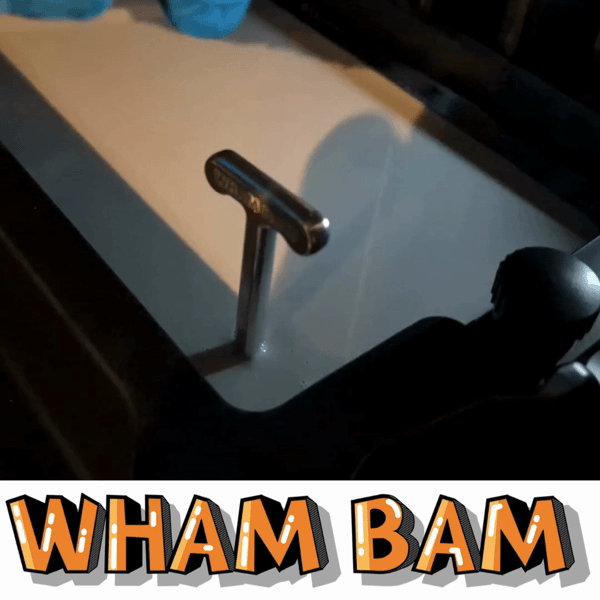
There are moments when you’ll need to change out your resin, either through choice or necessity. I’ve got a small metal funnel with a screen in it to weed out any particulate matter that might have broken off during printing, such as supports or nibbles on the print. The Ultim8 Fun (short for funnel – see? Clever!) is made of the same material as the Slap Mat, though it’s obviously molded into a conical shape. What’s different, however, is the inside.
Inside the Ultim8 Fun is a waffle pattern, along with two tabs on the edge. These, combined, make it useful for all those paper filters that ship with nearly every printer that I’ve been saying are useless. It’s not that those paper filters are useless, it’s that they tend to fold up, make a mess, and make things worse. With this funnel, you can secure the filters to the edge, and the paper filter will stay put. The fluted interior locks it in place, and that waffle pattern prevents vapor lock. That vapor lock can cause the resin to bubble and burp, causing a mess, but with this funnel I could pour in resin very quickly without worrying about overflowing.
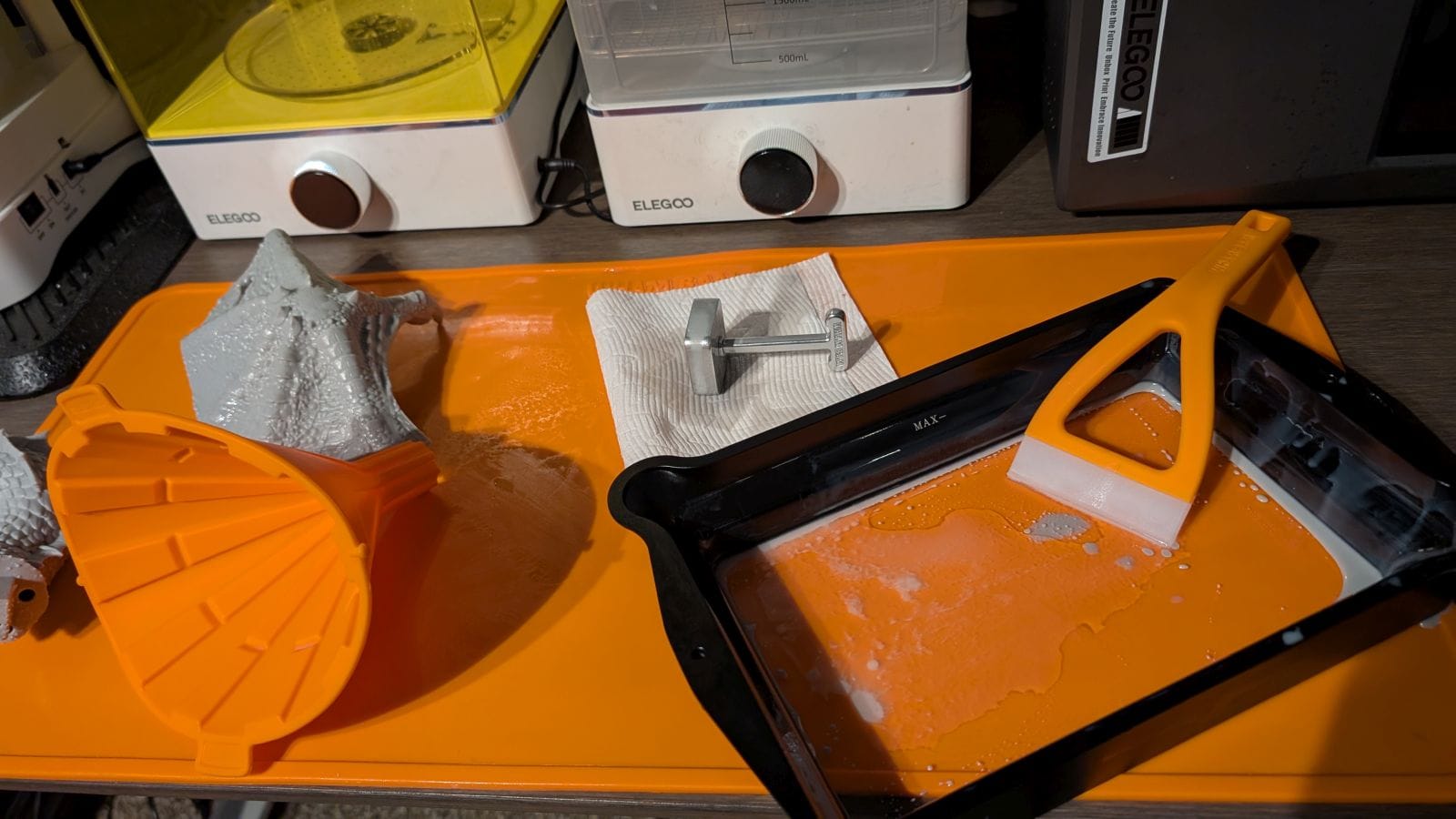
With the resin strained, it was time to clean. Just like the Slap Mat, I was able to leave this out in the sun, allowing the bits to cure and pop right out. A quick spray of IPA let me finish cleaning it up, and then it folds flat for storage – perfect for throwing into a plastic bag and storing in a drawer. This funnel will run you 13 bucks, which isn’t much more expensive than the janky little metal one I purchased, so this is an automatic yes from me.
The last stop on the Wham Bam tour is where it all started with me – the magnetic plate, or “Flexible Build System” as they call it. If you’re unfamiliar with how these work, they’re used to attach a magnetic plate to the bottom of your standard build plate. When you print, it’s on this magnetic plate, and when you’re done, you simply pop this off and flex it to release your prints. Your freshly-minted minis pop right off and straight into your wash/cure station without any trouble. The magnetic plate zaps right back onto your build plate, and you’re good to go for your next run. No scrapers, no scratches on your plate, and no chance of jabbing a solid metal edge deep into your thumb to cause you weeks of pain…not that I have any experience in that department.
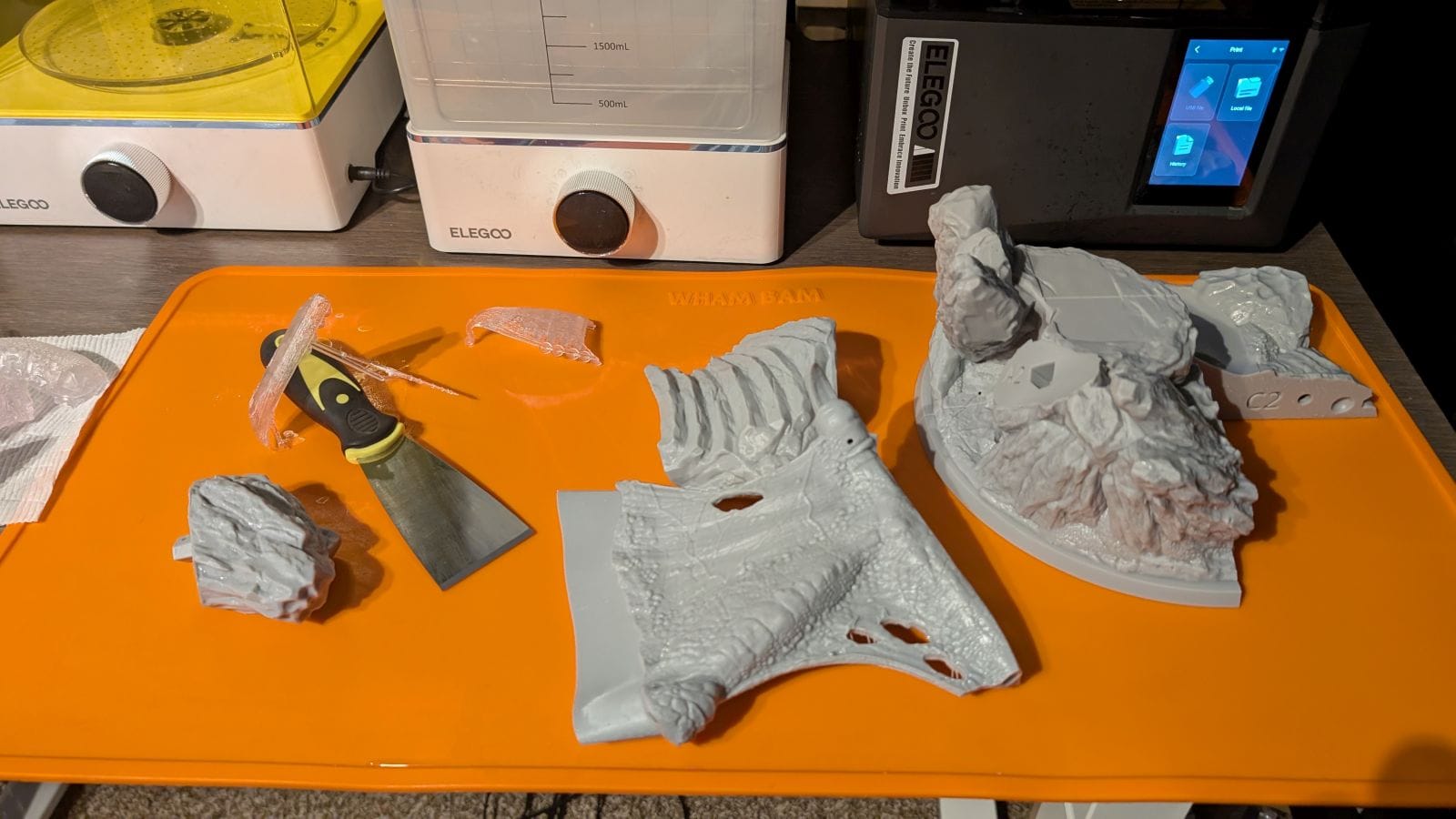
Attaching the plate is a breeze. The FBS comes with a magnetic sheet that you attach to your build plate with a speciality 3M adhesive that’ll hold up to resin and cleaning solvents. Roughing up the build surface on your build plate with a light sanding is a good idea for adhesion whether you’re using a magnetic build plate or not, and doing so will help the adhesive stick that much better. Once that’s locked onto your build plate, the FBS sticks to it magnetically, but there’s one small adjustment from there – adjusting your z-axis. Depending on the printer involved, you’ll need to do this manually, putting in a new z-stop at around 2.7mm. Check the support pages for your printer to make sure you do this step correctly, or you might be revisiting the section of this writeup on spills and the Slap Mat again.
While that last portion of adjusting the z-axis has a pucker factor the first time the magnetic flex plate meets your FEP, once you pop a print loose it instantly makes it all worth it. The FBS will run you anywhere from around $21 (Mars 5 Ultra) to $37 (Jupiter SE) depending on the size of the plate. I found that I liked having a second FBS so I could suspend the print inside the IPA for cleaning while I put a clean one on the printer and returned it to service. Obviously that’ll bump the price, but you’ll have to figure that out for your own workflow.
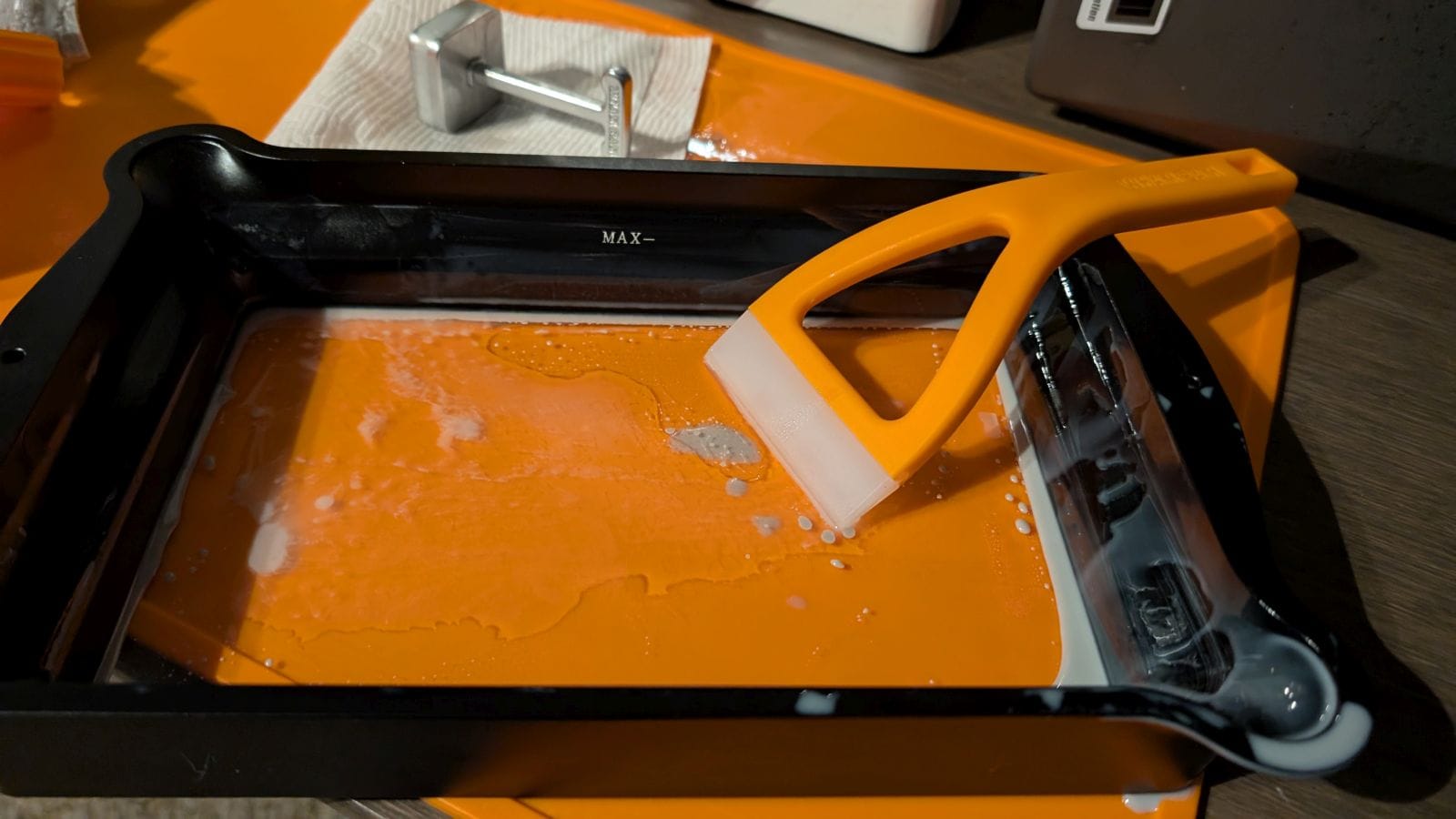
Ultimately I have to say that the Wham Bam systems did improve my workflow. I was surprised, however, at how much of a difference it made to my overall safety. The ability to keep my hands, gloved or otherwise, out of chemicals for cleaning and resin is invaluable, so the new options for curing and print exfiltration made it worth the price of admission. Sure, there are cheaper options out there, but I’ve tried them – pay the little bit extra, trust me on this. As somebody who has put hundreds of hours into resin printing, I can tell you that it’s worth every penny.
You can snap up a whole host of Wham Bam goodies at the official page. Tell us in the comments – are you into 3D printing? Do you use magnetic plates in your maker work?
